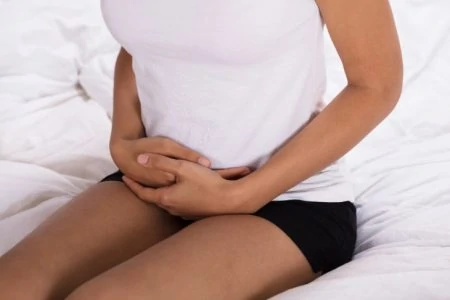Thinking about having a baby in your 40s? You are definitely not alone. We are seeing a major shift as more people choose to start or expand their families later in life.
This guide breaks down 30 essential statistics and facts about pregnancy after 40. We will cover the odds of natural conception, the real deal on health risks, and why specialized prenatal care matters.
Whether you are trying at 42, looking into IVF, or just curious about your fertility window, this article has the research you need. Get the facts so you can make the best decisions for you and your future little one.
Key Facts About Getting Pregnant at 40
- Birth rates are rising: The birth rate for women aged 40 to 44 in the U.S. has risen to 12.5 per 1,000 women.
- Conception odds: By age 40, healthy women have about a five percent chance of getting pregnant per menstrual cycle.
- Miscarriage risks: Pregnancies over age 40 carry a 40 percent chance of miscarriage, which is significantly higher than in your 20s.
- Health monitoring: Expecting mothers over 40 often take a daily low-dose aspirin to reduce the risk of preeclampsia.
Is 40 Too Old to Have a Baby?
It is absolutely not too old to have a baby, but you need to be realistic about the timeline. While many women have healthy pregnancies in their 40s, it is generally harder to conceive, stay pregnant, and deliver without complications. Healthy women around age 40 have about a five percent chance of getting pregnant during any given cycle (1). Unfortunately, the miscarriage rate also jumps to about 40 percent for this age group.
Fertility naturally dips after age 35. Since you are born with all the eggs you will ever have, your ovaries and eggs age right along with you (2).
As the number of eggs decreases, the remaining ones are more likely to have chromosomal abnormalities. This is why genetic conditions are more common in later pregnancies.
Peak fertility usually happens between your late teens and late 20s. By 30, things start to slow down. Once you hit 35, that decline speeds up significantly until age 45, at which point a natural pregnancy becomes very unlikely.
30 Pregnant at 40 Statistics and Facts
Getting pregnant after 40 comes with unique considerations for both you and the baby. We have gathered 30 crucial facts across four categories to help you understand the landscape.
Global Trends in Late Motherhood
Women are starting families later than they did a few decades ago. While some of these pregnancies are surprises, many are intentional. Here is a look at the numbers regarding mothers over 40 around the world.
- Worldwide shifts: In 1991, there were roughly 19 births per 1,000 women aged 40 to 44 (3). By 2013, that number tripled to 61 per 1,000 births.
- Germany’s numbers: Germany saw a steady rise in later-in-life mothers, recording 35,559 births from women over 40 in 2014, up from 34,641 the previous year.
- United States growth: The U.S. birth rate for women 40 to 44 hit 12.5 births per 1,000 women in 2022 (4). That is a four percent jump from 2021. Compare that to 1986, when the rate was just 3.8.
- Total live births: Between 2019 and 2021, roughly 3.6 percent of all live births in the U.S. were to women aged 40 or older (5).
- Canadian moms: More women in Canada are waiting longer. In 2018, mothers aged 40 to 49 accounted for 4.1 percent of live births (6). By 2022, that figure rose to 4.9 percent.
- England and Wales: The conception rate for women over 40 in England and Wales reached 17.1 per 1,000 women in 2021 (7). It has climbed steadily from 11.3 in 2004 and just 6.6 in 1990.
- Australian trends: In Australia, 15.5 women aged 40 to 44 (per 1,000) gave birth in 2019 (8). That is nearly double the rate from 1999.
Chances of Getting Pregnant at 40 Naturally
It helps to know the biological reality when you are trying to conceive naturally in your 40s. Here is what the data says about your odds.
- Per cycle odds: At age 40, a healthy woman has about a five percent chance of conceiving during any single menstrual cycle.
- Annual outlook: If you keep trying for a full year at age 40, you have roughly a 44 percent chance of getting pregnant naturally.
- Advanced maternal age: While “advanced maternal age” (over 35) sounds intimidating, plenty of women still conceive naturally and deliver healthy babies in their 40s.
- The drop-off at 45: By age 45, natural pregnancy becomes very rare (9). By age 43, the chance of natural conception drops to just one or two percent per year (10).
- Why fertility fades: Women are born with one to two million eggs, but that reserve depletes over time. Fewer eggs mean lower odds. Plus, issues like fibroids or endometriosis become more common with age, adding extra hurdles.
- Boosting your odds: You can improve your chances by maintaining a healthy weight, eating a nutrient-rich diet, exercising, managing stress, and cutting out smoking, vaping, and alcohol.
- IVF success rates: Assisted reproduction changes the math. For women aged 38 to 40, the chance of pregnancy with IVF is about 20.2 percent (11). This drops to 9.6 percent for ages 41, 42, and 2.9 percent after age 42.
- Clinic age limits: Because success rates drop below one percent after age 45, many IVF clinics set an age limit between 42 and 45 for using your own eggs (12). However, using donor eggs often extends that window up to age 50.
Maternal and Fetal Health Risks
Pregnancy places a lot of demand on the body, and age can amplify certain risks. Being aware of these symptoms helps you and your doctor manage them proactively.
- Preeclampsia watch: High blood pressure is more common in older expectant mothers. This can escalate into preeclampsia, a serious condition requiring immediate medical attention.
- Larger babies: Older moms have a higher chance of having a baby with macrosomia, which means the newborn is significantly larger than average.
- Gestational diabetes: The risk for gestational diabetes spikes with age (13). Mothers over 40 face a 15.6 percent risk, making them six times more likely to be diagnosed than mothers under 20.
- Miscarriage rates: Sadly, the risk of pregnancy loss rises with age. A 40-year-old woman faces a 40 percent chance of miscarriage, compared to just 15 percent for someone in their 20s.
- Placenta placement: Women over 40 are nine times more likely to experience placenta previa (14). This occurs when the placenta covers the cervix, potentially causing dangerous bleeding.
- Stillbirth statistics: The risk of stillbirth is 40 to 50 percent higher for women over 40 compared to those in their 20s (15). However, the overall percentage remains low (around 0.9 percent).
- Chromosomal conditions: At age 40, there is roughly a one percent chance of having a baby with Down Syndrome (16). For context, the risk is 0.08 percent at age 25.
- C-section likelihood: Cesarean sections are much more common in this demographic. Recent U.S. data shows that 47.4 percent of mothers over 40 had C-sections, compared to 27.9 percent of mothers in their 20s (17).
Prenatal Care and Monitoring
Because of the increased risks, your prenatal care will likely be more hands-on. Here is what you can expect regarding appointments and testing.
- High-risk status: In many places, being over 40 automatically classifies a pregnancy as “high-risk.” This usually means more frequent scans and blood pressure checks.
- Self-care is vital: Your daily habits play a huge role. Avoid infections, skip the alcohol and smoking, stay active, and eat nutrient-dense foods to give your baby the best start.
- Screening options: Noninvasive prenatal testing (NIPT) is highly recommended for older mothers. These blood tests screen for genetic conditions early in the pregnancy without risking the baby’s safety.
- Diagnostic testing: If a screening raises a red flag, doctors might suggest invasive tests like chorionic villus sampling (CVS) or amniocentesis. These provide a definitive diagnosis by testing cells from the placenta or amniotic fluid.
- Specialist care: You might be referred to a maternal-fetal medicine specialist (MFM). These doctors are experts in managing complicated or high-risk pregnancies.
- Frequency of visits: Expect to see your doctor more often. They will want to keep a closer eye on your blood pressure and the baby’s growth than they would for a younger mother.
- Aspirin therapy: To help prevent preeclampsia, your doctor might recommend taking a low-dose aspirin daily starting in the second trimester (18).
Pregnancy After 40 Success Stories
Don’t let the statistics scare you off, there are countless success stories of women welcoming healthy babies well into their 40s.
Nicole Kidman gave birth to her daughter, Sunday Rose, at age 41. She had a natural delivery without needing an induction.
Hilary Swank welcomed twins at age 48. While she likely had a highly specialized team monitoring her progress, her story proves that a healthy pregnancy is possible later in life. These stories highlight that while the journey might require extra medical attention, the destination is often a happy, healthy family.
How To Prepare for Having a Baby at 40
If you are planning to conceive or just found out you are expecting, taking proactive steps can make a massive difference. Here is a checklist to get you started:
- Check your weight: Aim for a healthy BMI before conceiving to reduce the risk of complications like gestational diabetes.
- Consult your doctor early: Schedule a preconception visit. If you have existing conditions like high blood pressure, getting them under control before pregnancy is non-negotiable.
- Prioritize nutrition: Focus on whole foods. A balanced diet fuels your body for the marathon of pregnancy.
- Start prenatal vitamins: Do not wait for a positive test. Start taking a prenatal vitamin with folic acid now to support early neural development.
- Cut the vices: Eliminating alcohol, tobacco, and recreational drugs improves your fertility and protects your future baby’s health.
- Consider fertility help: If you have been trying for six months without success, do not wait. See a fertility specialist to explore options like IVF or egg donation.






